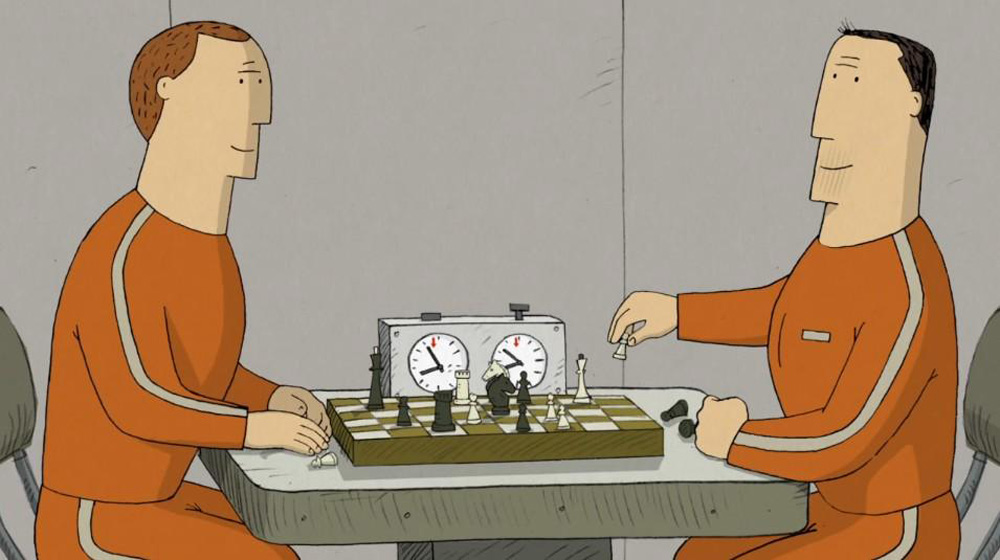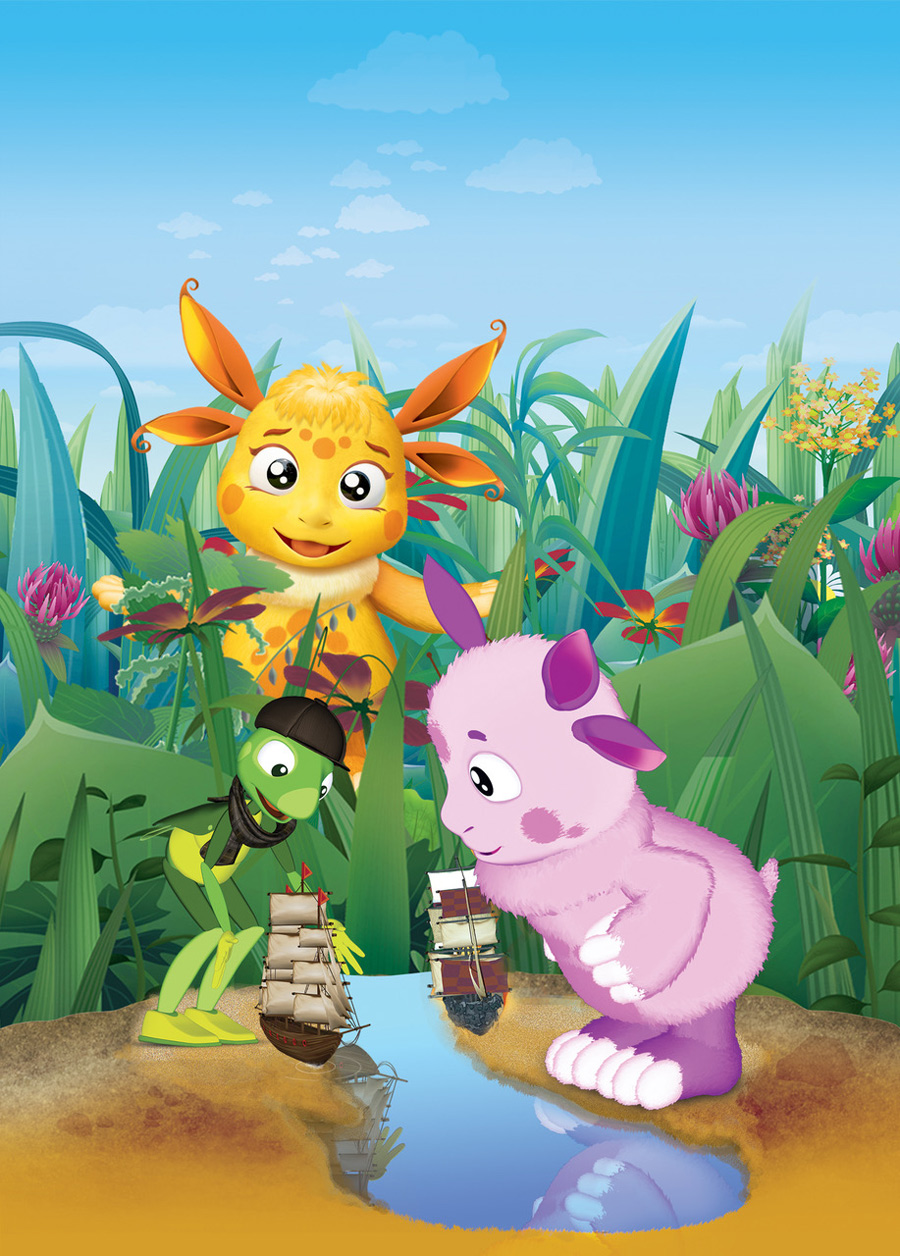We recently had the chance to talk to some of the key players at St. Petersburg-based animation studio Melnitsa on the occasion of its 20th anniversary. The acclaimed studio, which is best known for the work of two-time Oscar-nominated director Konstantin Bronzit (Lavatory-Lovestory, We Can’t Live without Cosmos) will be attending Annecy next week to spread the word on its upcoming movies and TV series. Here is a condensed version of our interview:
Can you tell us a little bit about Melnitsa and what sets it apart from other Russian animation studios?
Lucy Tsoy (Head of Business Development of CTB Film Co.): Melnitsa is known for the highly recognized specialists on board and the projects that they create. It was founded in 1999 by two friends: the prolific producer Sergey Selyanov, winner of the Producer’s AMPA among his numerous awards, and Alexander Boyarsky who received the 2016 State Award of the Russian Federation for his work for children and youth. From the very start Melnitsa was guided by the permanent art director Konstantin Bronzit — an award-winning animation film director, a two-time Oscar nominee and a member of the American, French and Russian film academies. The first success came along when Little Longnose was released in 2003 and became the first post-Soviet animation film. The team has never lost its passion for high-quality art animation since. The studio has developed an annual animation capacity of 600 minutes, has 9,000 of SKU licensed products, and has received numerous awards including two Oscar nominations and three Gold YouTube buttons. Deutsche Welle called the studio the Walt Disney of Saint Petersburg.
What are some of the projects the studio is working on now?
Tsoy: Melnitsa and CTB Film Company (its parent organization) are currently working on four TV series and seven full-length features. All TV series are gender neutral, the one is aimed at 8-11 year olds. Two projects, My Sweet Monster and The Nutcracker and the Magic Flute, meet the interest of the foreign markets, which is confirmed by pre-sales contracts for over 30 territories including China and South Korea.
My Sweet Monster is scheduled for 2020 and centers on the rebellious princess Barbara who runs away from the royal palace, only to fall into the hands of the monstrous forest bandit Bogey, and then turn his life upside down. The animated adventure of Marie and the Nutcracker, partially based on the fairy tale by Hoffman, is expected by Christmas 2021. A full-length feature devoted to the Barkers in the countryside is scheduled for spring 2021. Originally a TV show, with international recognition expected from deals signed with Tencent for China and Amazon Prime for all English-speaking countries, this feature film is being created to support and extend the brand. Fantastic Return to Oz (which is slated for a Russian premiere in autumn 2019) unveils the adventures of Ellie, who travels to the Emerald City along with her friend Tim to face the villain Urfin Jus once again.
How many people are currently employed at the studio?
Alexander Boyarsky (Director, Melnitsa): The studio – the largest one in Russia – has a full-time staff of over 300 employees. Many specialists are trained at the studio’s school, which gives students a solid, well-rounded education, and the encouragement to help them develop as artists.
What would you say are the studio’s most well-known projects worldwide?
Tsoy: Fantastic Journey to Oz is probably one of the studio’s most internationally acclaimed feature films. The story revolves around a little girl, Ellie, who becomes lost in the Magic Land. To date the film has been acquired for almost 70 territories including France, Germany, South Korea, China, U.K., Hungary, Bulgaria, Australia, Latin America and MENA countries. The film was a top 10 box office hit in the first weekend of its cinematic run in China and South Korea. In autumn 2019 the sequel Fantastic Return to Oz will premiere in Russia. The story has stood the test of time, and has all the ingredients to become a modern animated classic.
Russian audiences are also in love with franchises devoted to Three Heroes and Ivan Tsarevich. New films about the adventures of the Three Heroes and horse Julius are an integral part of the Russian New Year holidays and are consistent leaders of the Russian box office. The TV series Moonzy and The Barkers are also very popular in Russia and have a strong international recognition. Both shows are available on TV and VOD platforms across the world, including Amazon Prime in English-speaking countries, the launch on Pikaboo in former Yugoslavia is scheduled for autumn 2019.
The new series Little Tiaras, produced in partnership with CTB and CTC Media, has had great success since its national premiere in autumn 2018 and has gained popularity among girls aged 4-9. It was also presented to the global industry at MIP Junior ‘18 by CTC Media, who handled international sales. The story centers around five princesses, whose characters are based on traditional Russian folk tales, with each having her own super power. The girls go to a private school to study magic and learn how to use their powers, and that’s where the adventures start.
What would you say are some of the main challenges of keeping the studio afloat?
Sergey Selyanov (co-founder of Melnitsa): There are lots of “underwater stones” including the expensive production process, permanent search for unique ideas and original stories (there is obviously a lack of talented scriptwriters as we have a strong cameraman school in Russia but not the scriptwriting), payments for the equipment and programs, training and support for the employees, the releases on TV and in cinemas, content localizations in foreign territories etc. Many factors have to be taken into account.
Does the Russian government assist the studio in any way?
Tsoy: Melnitsa receives partial funding from the state. The studio applies for the right for state financing for every project it pitches and participates in the business missions organized by Russian Export Center and Moscow Export Center. Russian Export Center developed the trademark subsidy program to reimburse the costs of trademarks’ registration that we would love to take part in. Ministry of Economy has accepted the law to equate the producers of Russian animation studios to innovative IT companies and provide them with a similar level of tax benefits which could lead to lower costs for the production of cartoons and an increase of the companies’ competitiveness at international markets, respectively.
What do you look for in your international partners?
Selyanov: It is important for us to look in one direction, to share the understanding of the industries’ development, and of course, to work with acknowledged professionals. Melnitsa and CTB’s projects are represented at the international markets by our long-term partners: Ink.Global handles the sales of Moonzy and The Barkers; Luminescence promotes My Sweet Monster and The Nutcracker and the Magic Flute; and Wizart takes the responsibilities for both parts of Urfin Jus and Sheep and Wolves adventures.
Over the last 20 years, the studio has confirmed its leading position in the Russian animation market. It has raised several generations of talented animators. Yet this doesn’t mean we can rest on our laurels. We are planning to enhance the quality of production, and we are currently looking for international co-production partners to create animation that would appeal not only to the Russian viewers, but to wider audiences worldwide. For example, we would love to make a co-production with Canada ,but there’s no such button at the National Film Board website to apply from Russia, because there are no such precedents.
What kind of animation tools and technologies do you use at the studio?
Alexander Boyarsky (producer, Melnitsa): Melnitsa is a full service animation studio which produces every aspect of animation production in-house: storyboards, character design, background design and production, 2D animation, 3D animation, line tests, clean-up, ink and paint, compositing, editing and titles. Melnitsa’s sound division, Midi Cinema, handles all aspects of sound production from recording, design and editing to Dolby Digital surround sound mixing, Russian language dubbing, and music composition. The department of hand-drawn animation— the strongest and largest in the country — works on both classical and modern technologies including Cintiq/Wacom. Modern 3D technologies today provide unlimited possibilities for creation. So, it is a priority for our studio to prepare specialists who will be able to work with 3D at the highest professional level. That would allow not only to make high-quality products, but also significantly reduce costs for film production. That would certainly enable Melnitsa to take part in major international projects as a valuable partner.
What is your take on the global animation scene in 2019?
Tsoy: Global networking, financial pressure, extensive competition, assimilating restrictions of markets and converging media are pushing creative people more and more in the same direction. We aim to remain a unique voice of high-level animation and provide fertile soil for the development of a robust artistic identity with global appeal. We understand that Russia has a controversial reputation globally, but animation is separate from politics, and we’re truly working on making animated shorts, movies and TV shows for the whole world.
If you are Annecy next week, you can visit Melnitsa at MIFA at Russian Animation Booth, 4.D23. For more info, visit www.melnitsa.com














